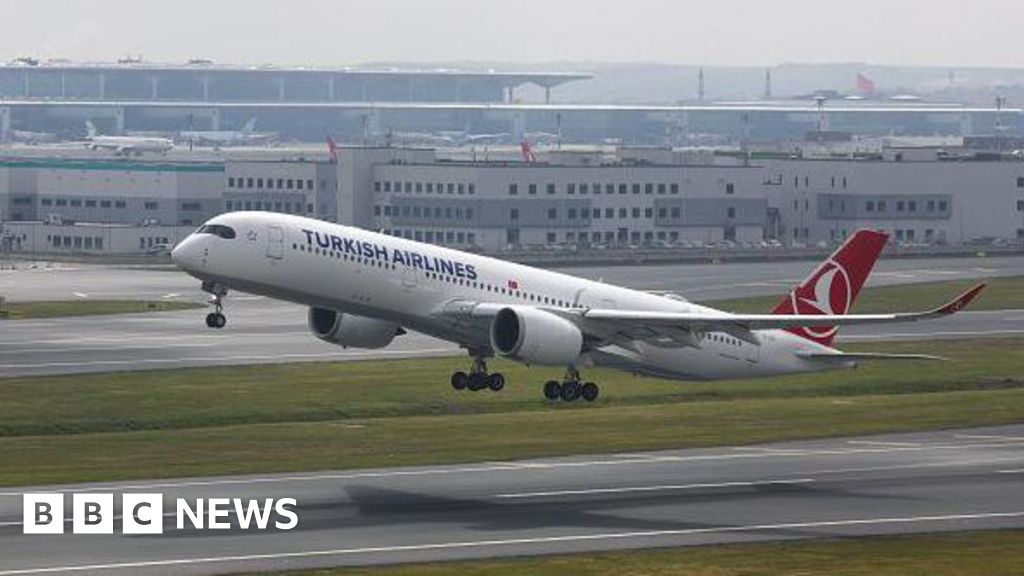- India
Eurovision star Nemo takes action after UK court ruling on transgender women
时间:2010-12-5 17:23:32 作者:Transportation 来源:Opinion 查看: 评论:0内容摘要:And Trump has also threatened other sectoral tariffs, including on pharmaceuticals and semiconductors. Those could still go into effect if they are not justified by IEEPA.And Trump has also threatened other sectoral tariffs, including on pharmaceuticals and semiconductors. Those could still go into effect if they are not justified by IEEPA.
In Manitoba, there are a total of 25 active fires, according to the province's fire situation report, with 11 classified as out of control.Danielle Desjardins, a meteorologist with Environment and Climate Change Canada based in Winnipeg, told the BBC that the forecast for both provinces is not promising.

While a cold front is expected to hit some parts of Saskatchewan, it will not bring relief to the regions where fires are burning."The bad news about this cold front is it's going to be windy," said Ms Desjardins, adding that the wind, coupled with the heat and lack of rain, are prime conditions for wildfire spread.Smoke from the fires has also left an estimated 22 million Americans under air quality alerts this weekend.

In northern Minnesota, residents have been warned smoke could reach levels "unhealthy for everyone", while the rest of the state faces air quality warnings for sensitive groups. That alert runs through Monday evening.Canada experienced its worst wildfire season on record in 2023, when more than 42 million acres (17.3m hectares) burned.

Fires happen naturally in many parts of the world, including in Canada.
But climate change is making the weather conditions needed for wildfires to spread more likely, according to the UN's climate body.In a spacious meeting room, Fracisco Lobos, the chief corporate officer for the plant's owner – salmon-exporter Multi X – explains how farming the fish has transformed the south of Chile.
"Salmon's been part of this region's industrial revolution," he says. "There used to be a lot of poverty in the region, and now many people earn more than in other parts of Chile."Because of the industry a lot of support services have sprung up, which benefit the families living here, and people have moved here from other parts of the country for work."
Atlantic salmon are not native to Chile. Instead, eggs were brought over to Chile from the UK at the end of the 19th Century and released into rivers, lakes and the sea to grow into fish for recreational fishing.Farming the fish in netted, offshore pens then started in the 1970s, before growing substantially ever since. There were 1,343 active salmon farms across southern Chile at the end of last year.
- 最近更新
- 2025-07-07 05:48:57Israel thinks Netanyahu is victorious against Iran – what will he do next?
- 2025-07-07 05:48:5712 posts from ‘12 day war’: How Trump live-posted Israel-Iran conflict
- 2025-07-07 05:48:57India forcibly sterilised 8m men: One village remembers, 50 years later
- 2025-07-07 05:48:57Iran attacks US air base in Qatar: What we know so far
- 2025-07-07 05:48:57Palestine Action are not terrorists. Israel is
- 2025-07-07 05:48:57Middle East & North Africa
- 2025-07-07 05:48:57Has Trump struck a trade deal with China – and what about other countries?
- 2025-07-07 05:48:57“Feelings running high” over politics at Glastonbury this year
- 热门排行
- 2025-07-07 05:48:57plummeted into a Philadelphia neighborhood
- 2025-07-07 05:48:57In effort to protect children, France bans smoking at parks and beaches
- 2025-07-07 05:48:57Pink Grapefruit-Tarragon Sorbet Pops
- 2025-07-07 05:48:57The myth of Iran’s invincibility has been broken, and the fallout could be far-reachi…
- 2025-07-07 05:48:57our growing library of personal finance guides
- 2025-07-07 05:48:57Man started Idaho blaze and then fatally shot 2 firefighters in ambush, officials say
- 2025-07-07 05:48:57in May of 2024 about her weight loss journey
- 2025-07-07 05:48:57Are airlines stopping flights to Middle East amid soaring tensions?
- 友情链接
- More Gaza aid hub killings as UNWRA head calls GHF process ‘an abomination’ Are airlines stopping flights to Middle East amid soaring tensions? Thatcher’s legacy endures in Labour’s industrial strategy Shell denies takeover talks with UK rival BP Why workplace anger is misunderstood US didn’t destroy Iran’s nuclear program: What new intelligence report says Thatcher’s legacy endures in Labour’s industrial strategy More Gaza aid hub killings as UNWRA head calls GHF process ‘an abomination’ Mapping Israel’s expanding battlefronts across the Middle East Toy prices rise amid Trump tariffs; bigger hikes possible Clooneys at the palace: King Charles shares a laugh with George and Amal Clooney at r… Gout Gout breaks own 200m record; beats Bolt’s Golden Spike debut time Legendary Dodgers announcer Jaime Jarrín speaks out on immigration raids Mapping Israel’s expanding battlefronts across the Middle East More Gaza aid hub killings as UNWRA head calls GHF process ‘an abomination’ Millions of Americans look for relief as heat wave sets record highs When we avoid our own and others’ anger, we miss a chance to improve everyone’s working life I’m in northern Gaza. I would rather starve than take GHF aid All to know ahead of the Topuria-Oliveira blockbuster bout at UFC 317 When we avoid our own and others’ anger, we miss a chance to improve everyone’s working life Trump declares ‘victory for everybody’ despite doubts over US strikes CBS NewsTrump says US will meet with Iran next week ParentsWhat the heck is a Labubu and why are kids obsessed? Will Trump’s Israel-Iran ceasefire really hold? Traffic safety watchdog looking into erratic driving by Tesla robotaxis Iran passes bill to halt IAEA cooperation as fragile Israel ceasefire holds Trump says US will speak to Iran next week and ‘may’ sign a nuclear deal Photos: Young Palestinians in Gaza turn plastic into fuel Who is Zohran Mamdani, New York’s likely next mayor? Israel (& the US) vs Iran – what just happened? | Start Here Q&A
